Before GPS navigation and endless digital entertainment transformed family road trips, the American highway system was dotted with quirky, wonderful attractions designed to break up long drives and create lasting memories. These beloved roadside stops weren’t just bathroom breaks—they were destinations that prompted excited cries of “Are we there yet?” from the back seat of wood-paneled station wagons across the country. From oversized oddities to natural wonders, these attractions turned ordinary journeys into adventures that families still reminisce about decades later.
1. Wall Drug Store

What began as a struggling pharmacy in the tiny town of Wall, South Dakota transformed into possibly the most famous roadside attraction in America through the simple promise of free ice water. When Ted and Dorothy Hustead began posting highway signs in 1936 advertising free ice water to parched travelers heading to Mount Rushmore, they created a marketing phenomenon that continues today with hundreds of billboards spanning multiple states. The anticipation built with each passing sign, making the actual arrival at Wall Drug an event worthy of Polaroid documentation. Road Unraveled takes a drive down memory lane to explore the rustic, quaint history of this peculiar attraction.
The sprawling 76,000-square-foot frontier town complex eventually expanded to include an 80-foot brontosaurus, western art gallery, animated T-Rex, and the original pharmacy where it all began. Generations of children have climbed aboard the giant jackalope for photos, sipped five-cent coffee, and explored the backlot attractions while parents stretched their legs and browsed for souvenirs. Wall Drug remains a testament to American roadside ingenuity, still drawing over two million visitors annually who follow those iconic signs promising everything from free ice water to homemade donuts and “Western Art Treasures.”
2. South of the Border
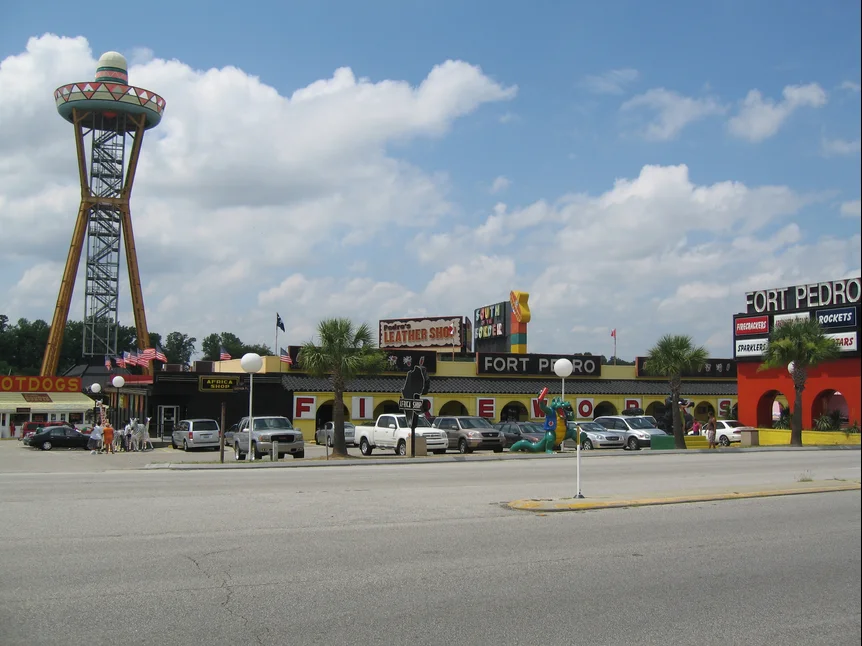
Pedro’s South of the Border in Dillon, South Carolina began as a humble beer stand in 1949 and grew into a Mexican-themed roadside empire complete with sombrero-shaped observation tower and countless billboards featuring questionable puns. The distinctive yellow and red signs counting down the miles to “SOB” (South of the Border) created mounting excitement for children as families made their way along I-95, with messages like “Keep Yelling Kids! They’ll Stop!” and “Pedro’s Weather Report: Chili Today, Hot Tamale!” serving as entertainment themselves. The 165-foot “Sombrero Tower” eventually became a landmark visible for miles, signaling to weary travelers that rest, food, and tacky souvenirs awaited. The Assembly NC dissects how this unique attraction continues to endure all these decades later, in such a different cultural landscape today.
At its peak, the complex included restaurants, gas stations, a campground, motel, amusement park rides, and countless gift shops selling everything from fireworks to rubber snakes. Children begged to ride the mini Ferris wheel or “Sombrero Lift,” while parents appreciated the clean restrooms and reasonably priced meals during long journeys between the Northeast and Florida. Though faded somewhat from its 1970s heyday, South of the Border remains an iconic example of mid-century roadside kitsch, where generations of families have posed beside concrete statues of Pedro and purchased Mexican jumping beans that rarely jumped.
3. Roadside Giant Statues

Across America, oversized fiberglass and concrete statues of people, animals, and everyday objects became must-see attractions that had families pulling over for photo opportunities and bragging rights. The Muffler Men—28-foot tall fiberglass giants originally created to advertise auto repair shops—became roadside celebrities in their various incarnations as Paul Bunyan figures, cowboys, astronauts, and pirates standing sentinel along highways. These massive sentinels often held props like hotdogs, axes, or mufflers, creating distinctive landmarks that appeared on countless family vacation slides and Kodachrome prints. According to ROUTE Magazine, these structures are a testament to how one man’s idea can blossom into a national phenomenon.
Beyond the Muffler Men, entrepreneurial Americans created an astonishing array of super-sized attractions: the 55-foot “Jolly Green Giant” in Blue Earth, Minnesota; the 26-foot tall “Big Tex” in Dallas; and “Lucy the Elephant,” the six-story pachyderm-shaped building in Margate City, New Jersey. Children would spot these colossal figures from miles away, their excitement building as the car approached these physical manifestations of American whimsy and excess. These roadside giants represented the golden age of automobile tourism, when simply making something extraordinarily large was enough to warrant a detour and a commemorative postcard sent to envious relatives back home.
4. Rock City Gardens
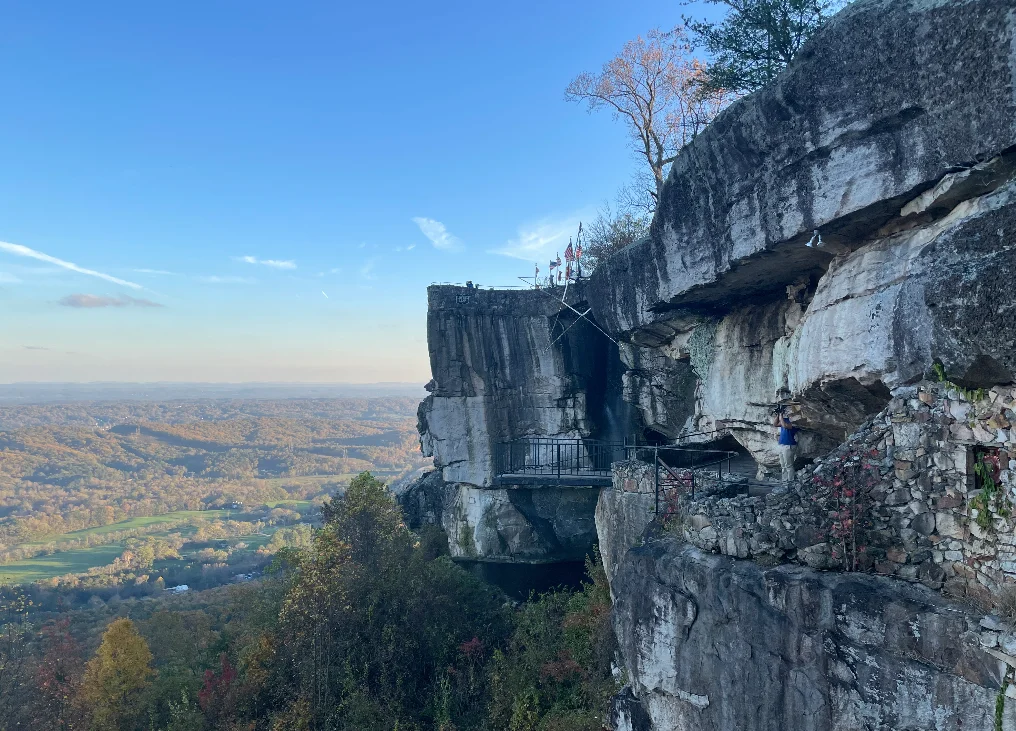
When Garnet and Frieda Carter opened their mountaintop rock formation gardens to the public in 1932, they couldn’t have imagined their marketing strategy would become as famous as the attraction itself. The simple imperative “See Rock City” appeared on barn roofs and birdhouse-shaped signs across the eastern United States, creating an early example of viral marketing that had families planning routes to include this Lookout Mountain, Georgia destination. The promise of seeing “seven states from one location” drew curious travelers to the natural rock formations, narrow passages, and carefully cultivated gardens perched above Chattanooga.
Children delighted in squeezing through “Fat Man’s Squeeze,” crossing the swinging bridge, and exploring the fairytale caverns populated with black-light gnome dioramas that added an element of kitsch to the natural splendor. Parents appreciated the spectacular views from Lover’s Leap, the well-maintained gardens showcasing over 400 native plant species, and the famous “See Seven States” panoramic viewpoint that rarely disappointed despite skepticism about whether Virginia was actually visible in the distance. Rock City became a model for combining natural beauty with family-friendly attractions, proving that with enough barn paint and whimsical gnome scenes, even rocks could become a tourism phenomenon.
5. Stuckey’s
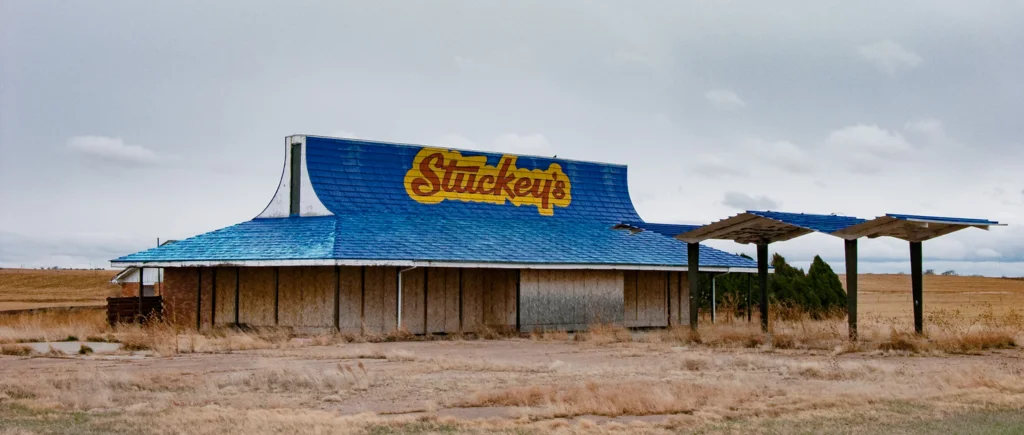
Long before convenience store chains standardized the highway rest stop experience, the teal blue roof of a Stuckey’s signaled a wonderland of pecan logs, clean bathrooms, and souvenirs that somehow seemed essential in the moment. Founded in 1937 by W.S. Stuckey Sr. in Eastman, Georgia, the chain expanded to over 350 locations during road travel’s golden age, positioning themselves as “highway happiness” at regular intervals along America’s growing interstate system. The distinctive combination of gas station, restaurant, candy shop, and gift emporium created a one-stop experience that parents found convenient and children found magical.
The true star of every Stuckey’s was the pecan log roll—a soft nougat center wrapped in caramel and rolled in pecans—that became the chain’s signature treat and prompted many families to develop traditions around sharing this sticky delicacy in the car. Beyond sweets, Stuckey’s offered an unparalleled selection of road trip essentials like plastic backscratcher-shaped like tiny hands, rubber alligators, pressed pennies, and coffee mugs emblazoned with family names or state mottos. Though the chain declined with the advent of faster highways and homogenized travel centers, the Stuckey’s experience remains a touchstone for baby boomers who can still taste those pecan logs and remember the excitement of being allowed to select one treasure from shelves of questionable souvenirs.
6. Mystery Spots and Gravity Hills
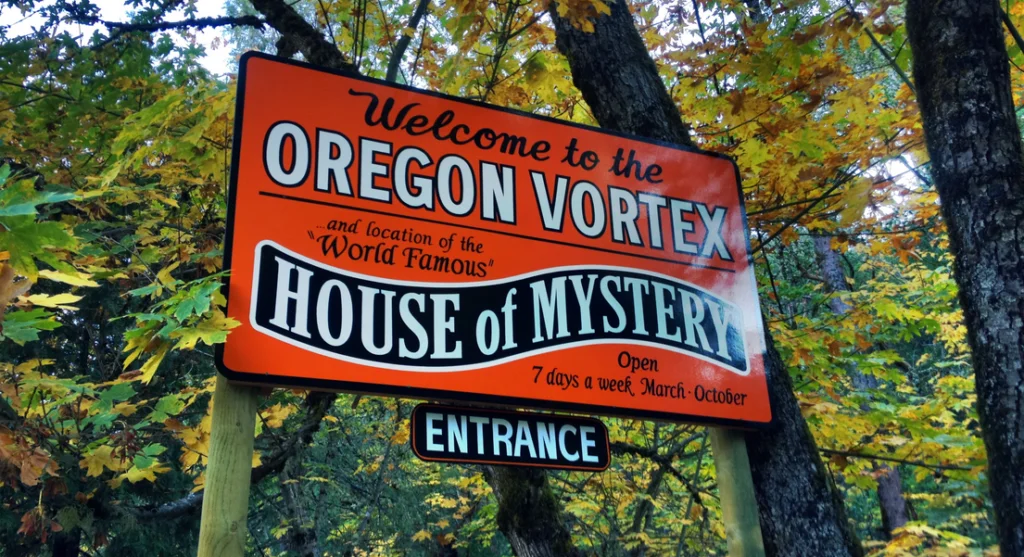
Across America, enterprising showmen transformed natural optical illusions and magnetic anomalies into tourist attractions where water appeared to flow uphill, brooms stood on end unassisted, and visitors seemed to grow taller or shorter depending on where they stood. The “Mystery Spot” near Santa Cruz, California became perhaps the most famous of these gravity-defying attractions, but similar sites appeared across the country with names like “Cosmos Mystery Area,” “Confusion Hill,” and “The Oregon Vortex.” Guided tours led wide-eyed visitors through crooked houses where balls rolled uphill and people appeared to change heights when switching positions, all accompanied by scientific-sounding explanations about magnetic fields and visual phenomena.
Parents indulged their children’s delight in these attractions while secretly enjoying the break from driving and the genuinely puzzling demonstrations that challenged their understanding of physics. Tour guides demonstrated water flowing the “wrong way,” pendulums swinging at impossible angles, and chairs balancing on two legs against apparent gravity, all commemorated in visitor photos that made everyone appear to be leaning at bizarre angles. Though modern science explains most of these effects as clever applications of perspective and optical illusion, these mystery spots represented a charming era when roadside attractions could still create genuine wonder and confusion without digital enhancements or elaborate technology.
7. Wigwam Villages
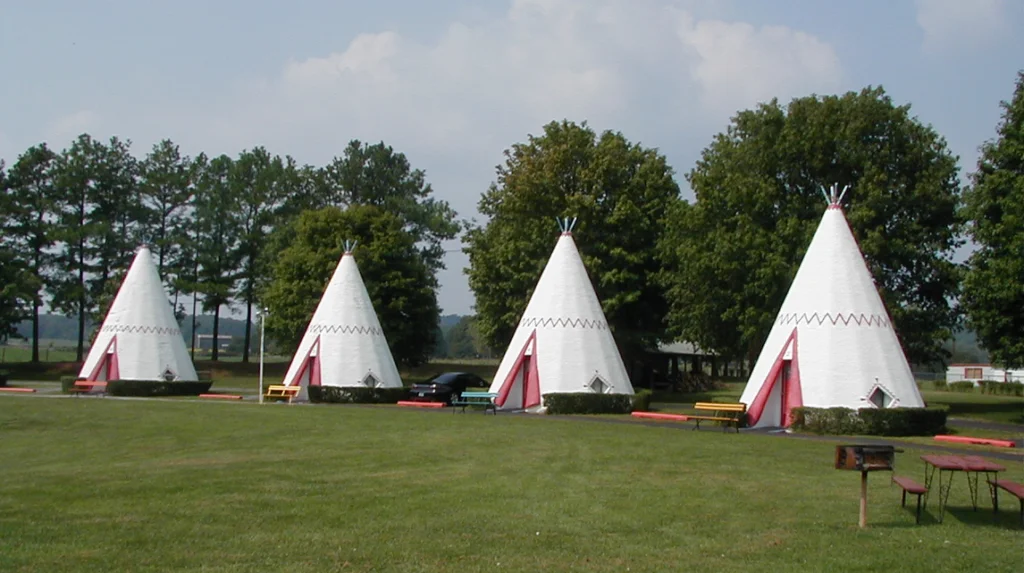
When Frank Redford built the first concrete teepee motel in 1933, he created an architectural novelty that would eventually become a chain of seven “Wigwam Villages” and an enduring symbol of mid-century American road trip culture. These villages featured individual concrete tepees arranged in semicircles, offering travelers the novelty of sleeping in a cone-shaped room while maintaining modern conveniences like indoor plumbing and electricity. Children who spotted the distinctive silhouettes from the highway would beg parents to stop, enchanted by the possibility of this playful lodging experience that seemed straight from a cowboy movie.
The approximately 30-foot tall structures typically contained a single room with bed, toilet, and shower, with vintage furnishings that completed the time-capsule experience. Of the original seven villages, three survive today in Holbrook, Arizona; San Bernardino, California; and Cave City, Kentucky—now protected as historic landmarks and still operating as motels. These remaining wigwam villages attract both nostalgic baby boomers recreating childhood vacations and younger generations seeking authentic retro experiences from America’s motel golden age. For many families, spending a night in these concrete cones wasn’t just accommodation but a highlight of the entire vacation, creating memories distinct from forgettable nights in conventional hotel rooms.
8. Roadside Reptile Gardens and Zoos
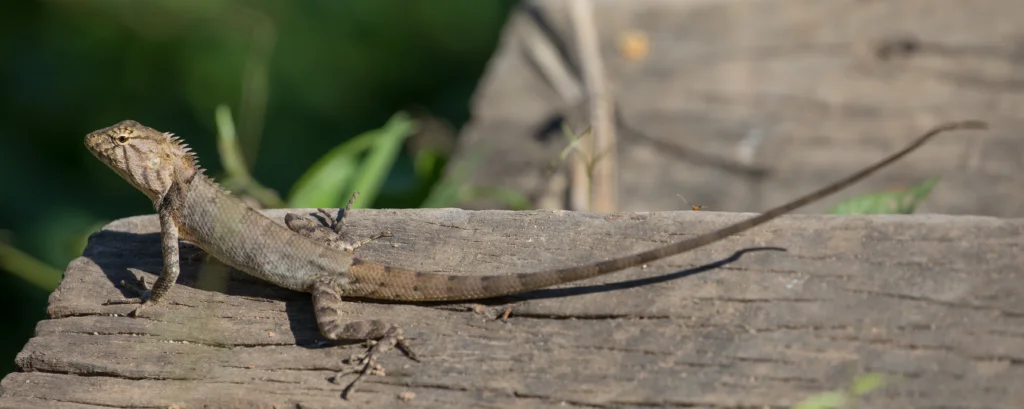
Long before animal welfare concerns and streaming nature documentaries transformed our relationship with exotic animals, roadside zoos and reptile gardens lured families with promises of close encounters with dangerous creatures. Attractions like “Snake World,” “Gatorland,” and the famous “Reptile Gardens” in Rapid City, South Dakota became standard stops on family vacations, offering children the thrilling opportunity to hold baby alligators, watch snake-handling demonstrations, or pose with parrots. These small-scale animal attractions often began as personal collections that entrepreneurial animal enthusiasts transformed into tourist destinations, complete with gift shops selling preserved scorpions in paperweights and rubber snake souvenirs.
Parents who might have hesitated at the entrance fee typically relented after persistent pleading, recognizing the educational value amid the sometimes sensationalized presentations about venom and fang length. The braver family members would volunteer during demonstrations to hold snakes or participate in feeding rituals, creating treasured photographs and stories that grew more dramatic with each retelling at family gatherings. While many of these smaller operations have closed due to changing regulations and attitudes toward animal exhibition, several historic facilities like the venerable Reptile Gardens (founded in 1937) have evolved into accredited zoological facilities, maintaining their roadside appeal while improving conditions and educational emphasis.
9. The World’s Largest Everything
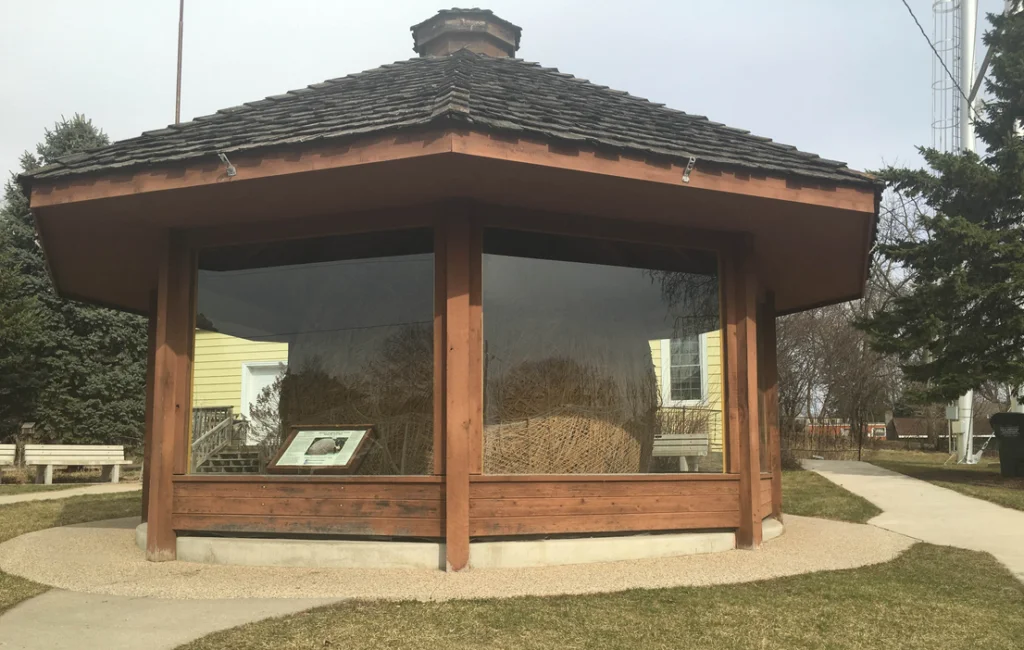
The American roadside became a competitive landscape of superlatives, with towns across the country constructing oversized versions of local products or whimsical objects to claim “World’s Largest” titles that would appear in travel guides and atlas footnotes. Families detoured to see attractions like the World’s Largest Ball of Twine in Cawker City, Kansas; the World’s Largest Frying Pan in Long Beach, Washington; or the World’s Largest Concrete Muskie Fish in Hayward, Wisconsin. These community-built curiosities became points of pride and economic drivers for small towns, justifying themselves through souvenir sales and increased business at nearby restaurants and gas stations.
The family station wagon would inevitably slow when roadside signs announced approaching superlatives, with children pressing noses against windows in anticipation of these monuments to American excess and creativity. Parents obligingly pulled over for the mandatory family photo beneath the World’s Largest Rocking Chair or beside the World’s Largest Cherry Pie Tin, creating visual evidence of having seen these roadside wonders with their own eyes. The tradition continues today with new “World’s Largest” attractions still being constructed, though the competition has intensified—the title of World’s Largest Ball of Twine, for instance, remains hotly contested between rival twine balls in Minnesota, Kansas, Missouri, and Wisconsin, each claiming supremacy by different measuring standards.
10. Frontier Town Recreations
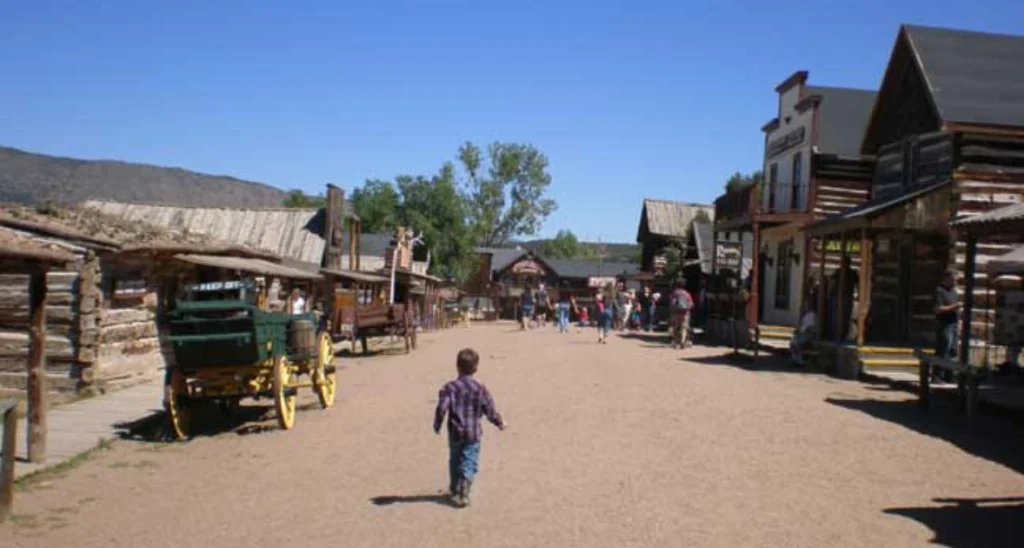
As Americans became increasingly nostalgic for the supposedly simpler times of the frontier era, roadside “Old West” towns sprang up alongside highways, offering romanticized recreations of cowboy culture and pioneer living. These attractions typically featured wooden boardwalks, saloons serving sasparilla, staged gunfights, and staff dressed in period costumes who stayed in character while interacting with visitors. Popular examples included “Frontier Town” in North Hudson, New York; “Old Tucson” in Arizona; and “Ghost Town in the Sky” in Maggie Valley, North Carolina, where families could pan for gold, ride stagecoaches, and watch can-can dancers perform G-rated routines.
Children delighted in being “deputized” with tin badges, witnessing bank robberies with predictably comedic outcomes, and sitting in authentic-looking jail cells while parents appreciated the walking history lessons and opportunities for memorable family photos in sepia-toned “Wanted” posters. These attractions flourished particularly during the 1950s and 1960s when television westerns dominated prime time and every child owned a cowboy hat or coonskin cap. While many of these frontier towns eventually closed as entertainment preferences shifted, several historic examples have been preserved as living history museums, maintaining their educational value while evolving beyond their roadside attraction origins.
11. Marineland and Roadside Aquariums
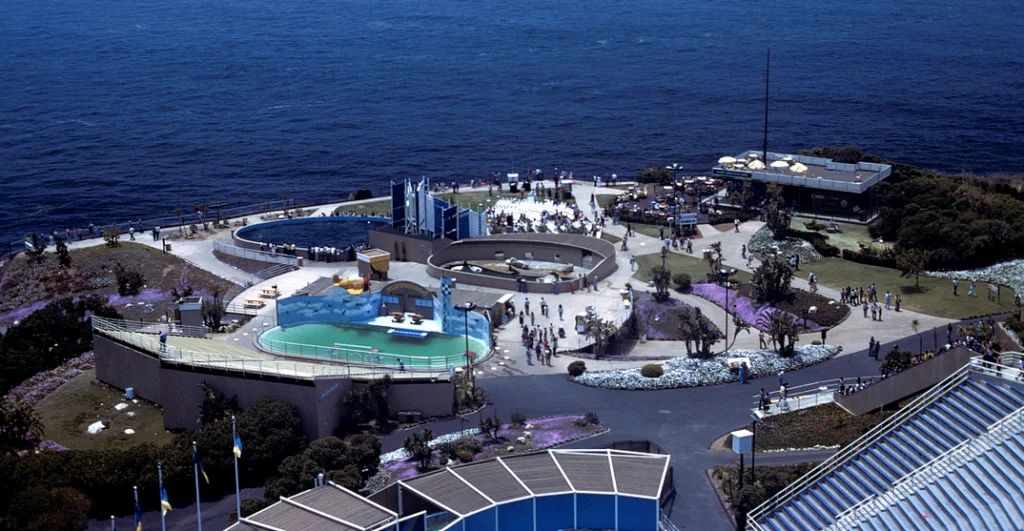
Before SeaWorld and modern aquarium complexes, pioneering attractions like Marineland of Florida (opened in 1938 as “Marine Studios”) introduced inland Americans to oceanic wonders with performing dolphin shows and fish tanks visible through portholes. These early marine parks positioned themselves as scientific research facilities and educational institutions, attracting families who had previously only encountered sea life in encyclopedia illustrations or occasional visits to coastal beaches. The innovative circular Oceanarium tank design at Marineland allowed visitors to view dolphins and other marine animals from multiple underwater vantage points, creating an immersive experience that seemed magical in pre-IMAX days.
Souvenir pennants from these attractions adorned many a child’s bedroom wall, alongside preserved starfish and jars of colored sand layered to form seaside scenes. Parents justified these entertainment stops as educational experiences that complemented school science lessons, while children simply marveled at the grace of dolphin acrobatics and the alien appearance of creatures like octopuses and moray eels. While most of these pioneering marine attractions have closed or been absorbed into larger operations, they represented an important transitional moment in American tourism, when roadside stops began incorporating educational elements that went beyond simple novelty or visual spectacle.
12. Roadside Presidents and Historical Figures
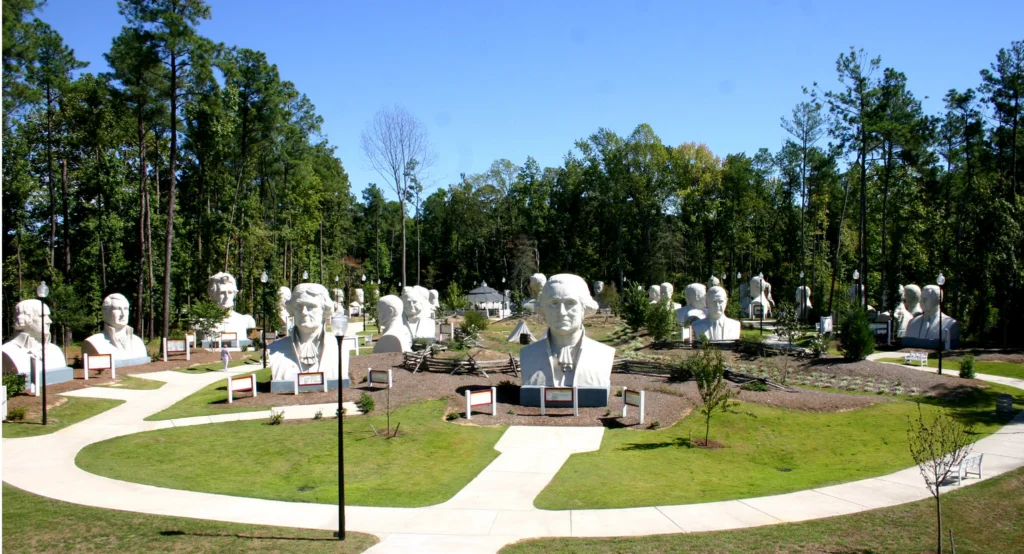
The American fascination with presidential history spawned numerous roadside attractions featuring wax figures, animatronic displays, and collections related to former commanders-in-chief. The “Hall of Presidents” concept appeared in various forms across the country, from simple wax museums to elaborate animatronic shows where mechanical presidents recited their famous speeches while gesturing with pneumatic arms. Perhaps most famously, “Presidents Park” in Williamsburg, Virginia and later South Dakota featured enormous concrete busts of presidents standing over 20 feet tall, creating imposing photo opportunities that blended education with novelty.
History-minded parents encouraged stops at these presidential attractions, seeing them as painless ways to supplement their children’s understanding of American leadership while breaking up long drives. Young visitors were typically less interested in the historical narration than in the spectacle of seeing all the presidents gathered in one location, though the more gruesome details of presidential assassinations often captured their attention during otherwise dry presentations. While many of these attractions have closed—the giant presidential heads from Presidents Park now famously deteriorate on private farmland in Virginia—they represented an earnest attempt to make history accessible and entertaining for families traversing America’s highways.
The golden age of roadside attractions embodied a uniquely American approach to travel—optimistic, occasionally bizarre, and fundamentally democratic in its appeal. While today’s families might navigate between destinations with GPS precision and iPad entertainment, something magical has been lost with the decline of these highway landmarks that punctuated journeys with wonder and whimsy. Perhaps that explains why surviving roadside attractions continue to draw visitors, not just for nostalgia but for the authentic experience of discovery that happens when you actually do stop to see the World’s Largest Ball of Twine—and find it genuinely impressive after all.


